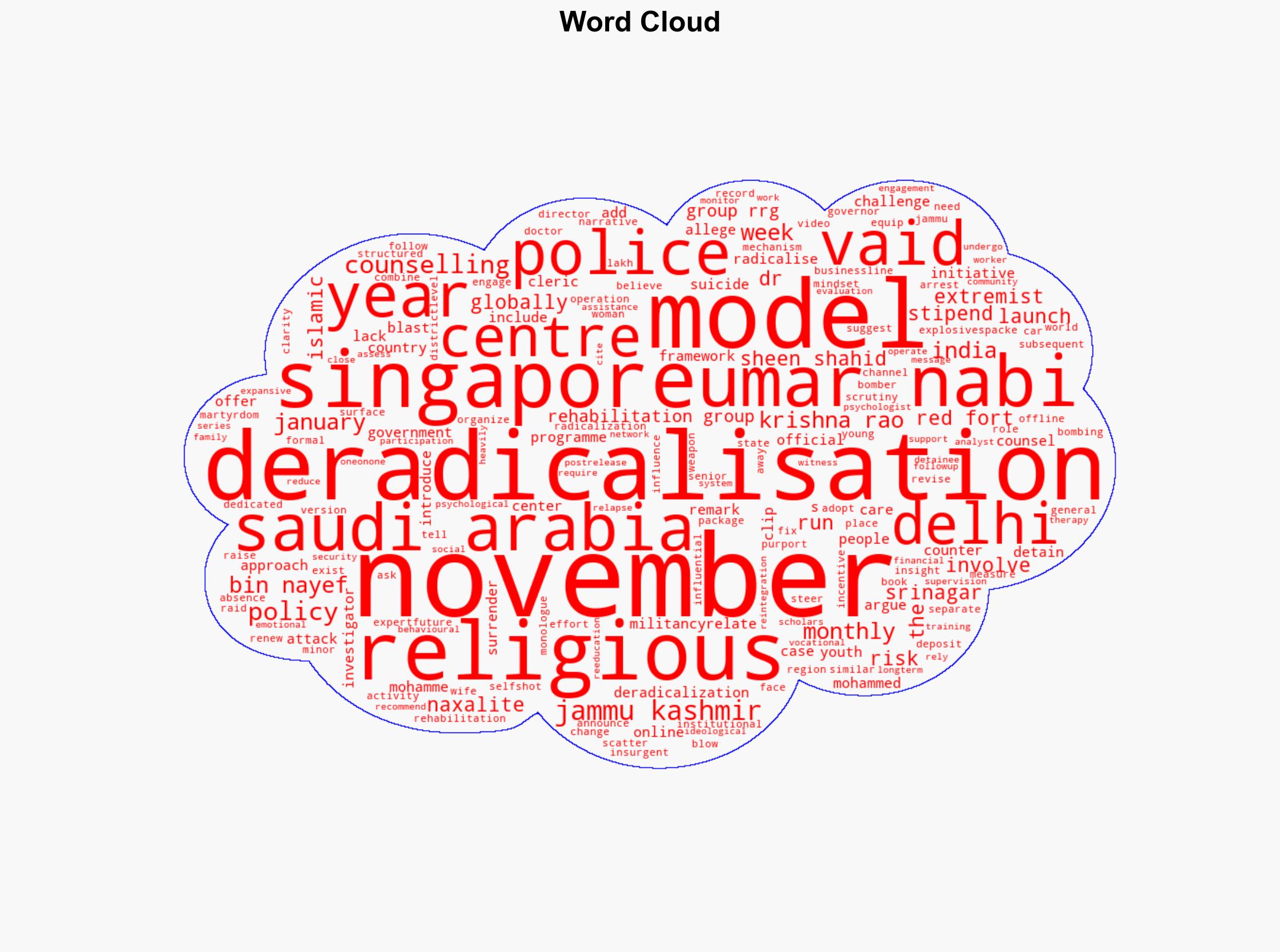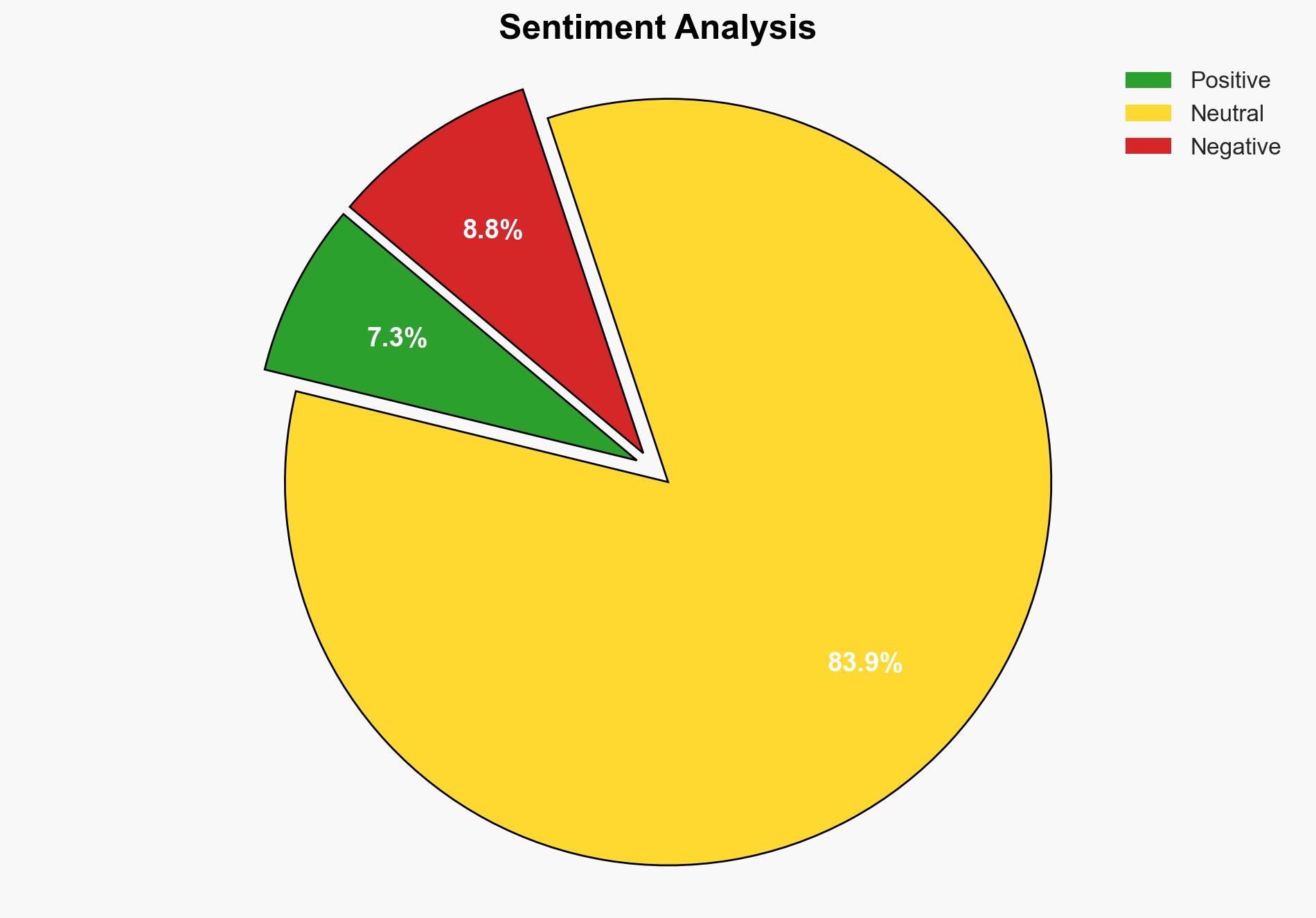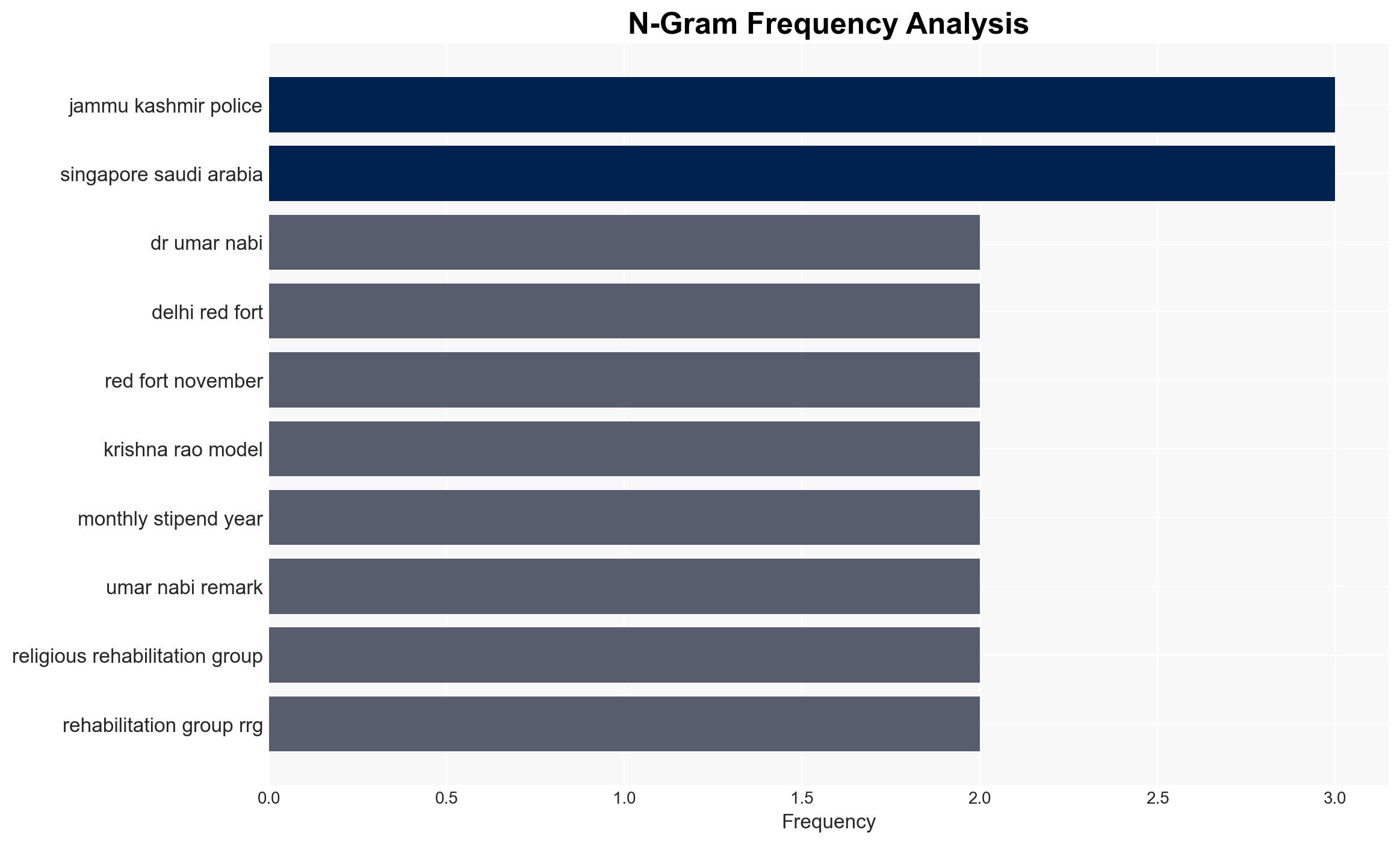Red Fort suicide attack renews debate on how J K counters radicalization – BusinessLine
Published on: 2025-11-20
AI-powered OSINT brief from verified open sources. Automated NLP signal extraction with human verification. See our Methodology and Why WorldWideWatchers.
Intelligence Report:
1. BLUF (Bottom Line Up Front)
The most supported hypothesis is that the current deradicalization efforts in Jammu and Kashmir (J&K) are insufficient and lack a structured, comprehensive approach, leading to vulnerabilities in counter-radicalization efforts. Confidence Level: Moderate. Recommended action includes the development and implementation of a structured deradicalization framework modeled after successful international programs.
2. Competing Hypotheses
Hypothesis 1: The lack of a structured deradicalization policy in J&K is a significant factor contributing to the radicalization of individuals, as evidenced by the recent suicide attack.
Hypothesis 2: The radicalization of individuals in J&K is primarily driven by external influences and online propaganda, and the absence of a formal deradicalization policy is a secondary factor.
Hypothesis 1 is more likely given the evidence of ineffective current measures and the success of structured programs in other countries. The absence of a comprehensive policy is a critical gap that allows radical ideologies to proliferate.
3. Key Assumptions and Red Flags
Assumptions include the belief that structured deradicalization programs are effective in reducing radicalization. A red flag is the potential bias in attributing radicalization solely to the lack of policy without considering socio-political factors. Deception indicators could include overstated success of existing initiatives by local authorities.
4. Implications and Strategic Risks
The absence of a robust deradicalization framework could lead to increased radicalization, resulting in more frequent and severe attacks. This could escalate into broader political instability in J&K, potentially affecting national security. Cyber and informational threats may also rise as extremist groups exploit online platforms to spread propaganda.
5. Recommendations and Outlook
- Develop a comprehensive deradicalization framework incorporating psychological support, religious counseling, and community engagement.
- Engage credible religious leaders to counter extremist narratives.
- Implement a pilot program modeled after successful international examples like Singapore and Saudi Arabia.
- Best Scenario: Successful implementation reduces radicalization and enhances regional stability.
- Worst Scenario: Continued attacks lead to heightened instability and international scrutiny.
- Most-likely Scenario: Partial improvements with ongoing challenges due to entrenched issues.
6. Key Individuals and Entities
Dr. Umar Nabi, Sheen Shahid, S. P. Vaid
7. Thematic Tags
Structured Analytic Techniques Applied
- ACH 2.0: Reconstruct likely threat actor intentions via hypothesis testing and structured refutation.
- Indicators Development: Track radicalization signals and propaganda patterns to anticipate operational planning.
- Narrative Pattern Analysis: Deconstruct and track propaganda or influence narratives.
- Network Influence Mapping: Map influence relationships to assess actor impact.
Explore more:
Counter-Terrorism Briefs ·
Daily Summary ·
Support us





